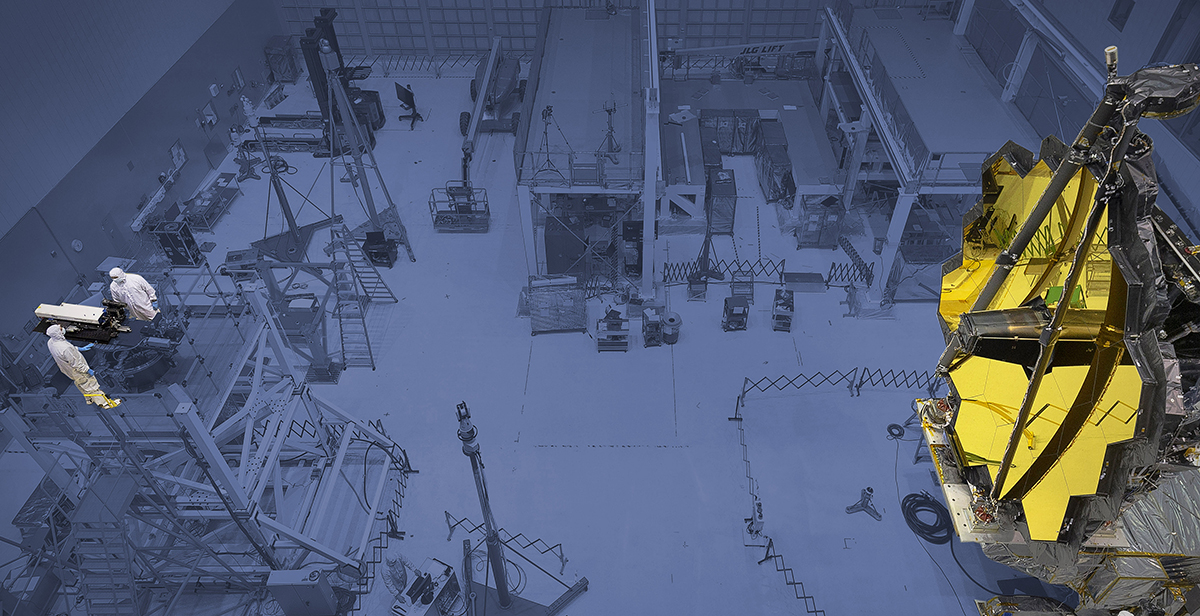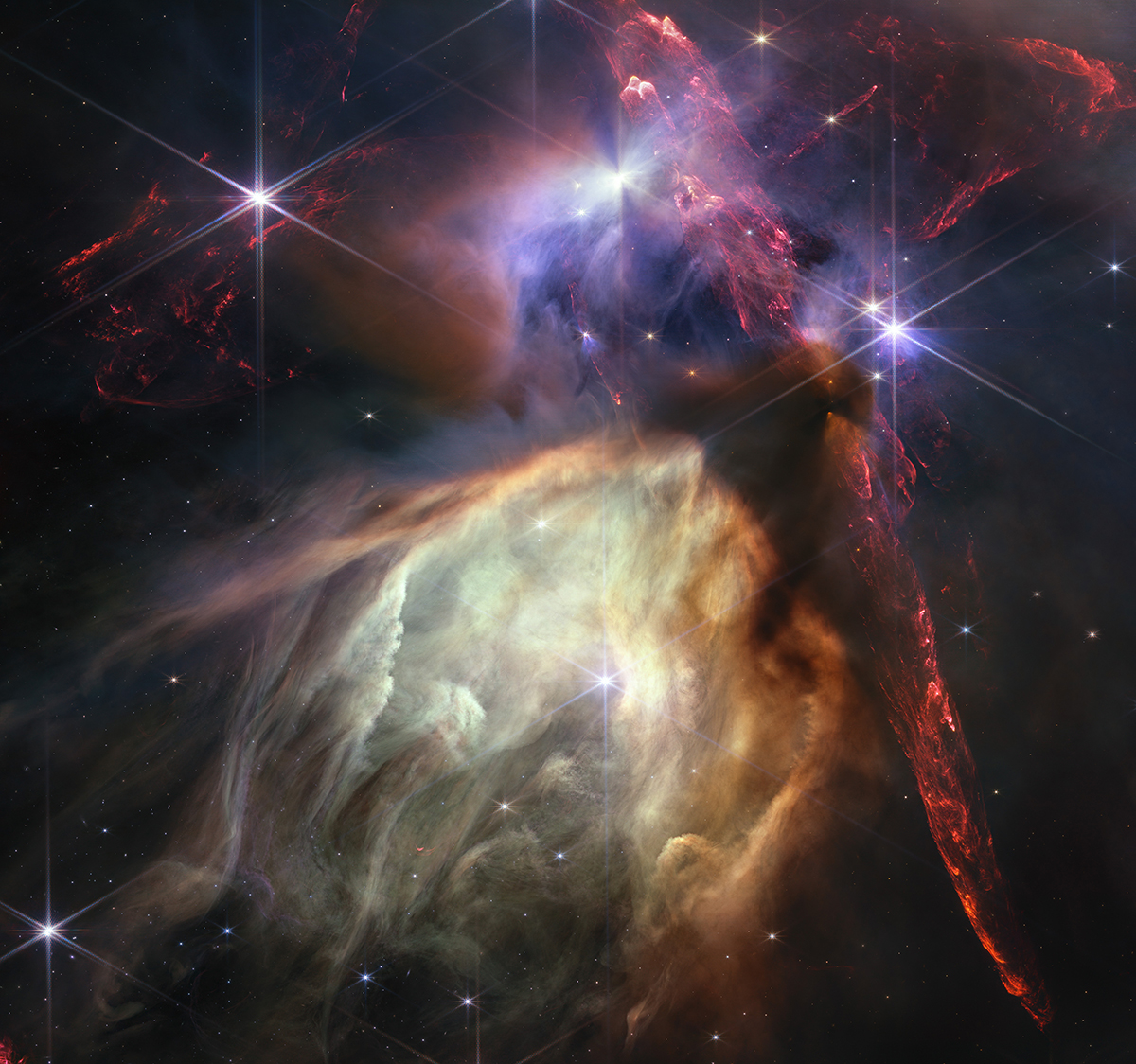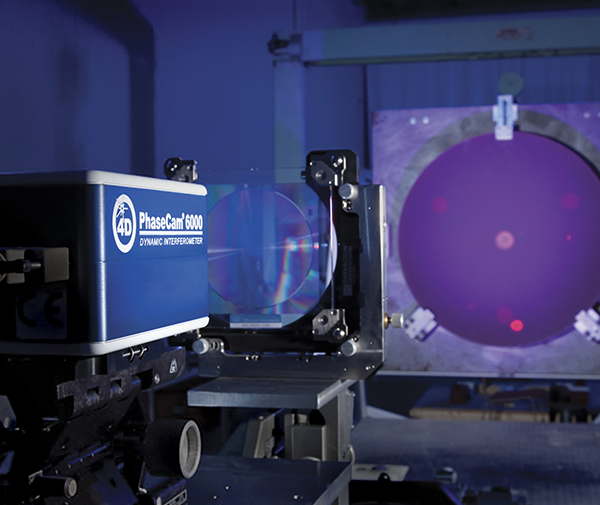
Making the Most of Meticulous Measurements
Subheadline
Better space telescope testing makes waves in optics industry
Since the launch of the James Webb Space Telescope, the space observatory has made numerous discoveries about our universe, but it also led to developments in a scientific field that is necessary to science itself.
Metrology is defined as the science of measurement, and it is key to ensuring that scientific tools work. Calibrating equipment is no small feat when working in the smallest fractions of an inch. The mirrors on space telescopes need to be as smooth as possible to focus the light of distant galaxies. Other methods of telescope testing have resulted in leaps before, but Webb’s unique folding mirror segments had special requirements that a solid mirror didn’t.
“Twenty-five years ago, we realized that our primary goal had to be to develop methodologies and instrumentation that would enable us to do measurements for a cryogenic segmented telescope,” said Babak Saif, chief optical metrologist on the Optical Telescope Element of the Webb telescope. “That had never been done before.”
NASA’s Goddard Space Flight Center in Greenbelt, Maryland, reached out to the private sector for the right technology to make these precision mirror measurements. Soon, a company called 4D Vision was contracted to work on optical testing equipment for Webb.
“NASA actually was 4D’s very first customer ever,” said Erik Novak, vice president and general manager of 4D. “We were approached because obviously telescope optics are large, and they need to be tested from dozens of meters away. That’s where your test system has to be. And the only way to do any of that is with a vibration-immune technique.”
The company uses a technique called interferometry, which uses light to make precise measurements. When anything happens to change the path of light that reflects off a tested object, those variations can be detected and used to spot any irregularity in the object’s surface. 4D’s interferometer was different than others, however. Instead of just noticing slight differences in light from one wavelength, it would use multiple wavelengths of light aimed at the Webb telescope’s mirror segments, as well as a reference model of what a perfect surface would look like. These reflected beams would then bounce back to a detector on the machine, and the combination of wavelengths would allow much greater deviations to be measured while not sacrificing any of the system’s high precision. This new method is called multi-wavelength interferometry.
“Multi-wavelength interferometry didn’t exist when we started building Webb,” said Saif. “It allowed us to test the primary mirror and be able to actually do the measurements and make sure that we can go to a fraction of the wavelength of the light and also get very high-precision information out of it.”
After a series of mergers and acquisitions, a successor company called 4D Technology, based in Tucson, Arizona, was founded in 2011. Well after the company provided this specialized testing equipment to NASA, Novak said, he saw several potential commercial uses for the technology.
“We serve the optics industry very generally, and what we developed for NASA has been applicable to a lot of that,” Novak said.
Today, 4D Technology is a subsidiary of Onto Innovation. The measurement systems developed for Webb have gone on to be used in testing other precision optics, such as lenses for virtual reality headsets or high-end camera equipment. It has also seen use outside of optics, to test contact lenses and advanced semiconductors for computers, and to spot defects on aircraft engines.
“This is a completely brand-new space,” Novak said. “The people at NASA are some of the brightest of the brightest, and so just brainstorming ideas and how we might solve them has been very beneficial to us.”

The James Webb Space Telescope recently captured this image of the Rho Ophiuchi cloud complex. For the telescope to take these stunning images, its mirror needs to be free of imperfections. Equipment built to NASA specifications to test Webb’s precision optics went on to test optics of all kinds. Credit: NASA, ESA, CSA, STScI, and K. Pontoppidan (STScI). Image Processing: A. Pagan (STScI)

PhaseCam is one of 4D Technology’s commercial products. As a multi-wavelength interferometer, it’s capable of measuring optics with an extreme degree of precision. This type of measurement didn’t exist in a commercial form until after 4D’s work on the Webb telescope. Credit: 4D Technology

Highlighted here are Webb’s primary mirror and the 4D interferometer used to test the surface. To remove interference caused by vibrations, the mirror had to be measured from several yards away. The ability to measure accurately at a distance is also a feature of 4D Technology’s commercial offerings. Credit: NASA/Chris Gunn













